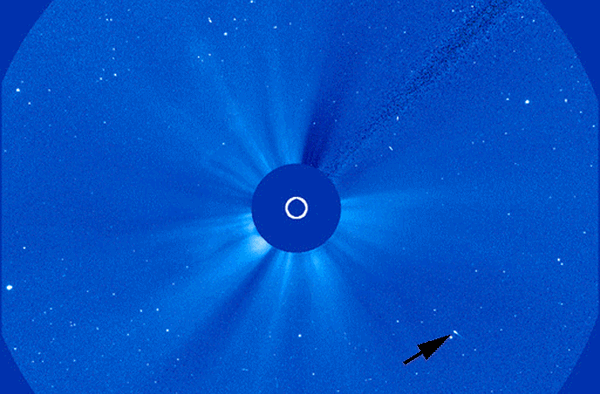Bye Bye Snowball: A Comet's Hellish Death Dive
You know expression: “not a snowball’s chance in hell”? Well, this dirty snowball is rapidly falling toward its own version of hell — the searing hot solar corona, the sun’s multimillion degree atmosphere. Unfortunately for the comet, another expression accurately describes its chances for survival: “zero to none.”
As imaged by the veteran Solar and Heliospheric Observatory (SOHO), a joint ESA/NASA mission that has been staring at the sun since 1996, this is only the latest of hundreds of “sungrazing” comets to be discovered by SOHO. Alas, little comet, we hardly knew thee — as it rapidly approaches the sun, it will most likely vaporize long before it makes closest approach, according to NASA’s Tony Phillips of Spaceweather.com. In fact, we are looking at an ancient comet with only hours left to live.
This comet, with a nucleus likely no more than 10 meters wide, is part of the Kreutz sungrazer family of comets. Kreutz sungrazers are fragments of a larger comet that broke up centuries ago. They get their name from German astronomer Heinrich Kreutz who identified and studied them in great detail in the 19th century.
As our attention is firmly on Comet ISON and its impending game of “chicken” with our nearest star, it’s worth remembering that cometary evaporation by way of solar baking is by no means a rare event. Fortunately for ISON, however, it’s quite a bit larger (with a nucleus measuring approximately 3.1 miles across) than this anonymous lump of ice and the prognosis is good for ISON to blast through the corona, passing only 621,000 miles from the solar “surface” (the photosphere) and reappearing, possibly dazzing Earth with a beautiful comet tail in December.
Animation credit: NASA/ESA/SOHO(Oct 10, 2013 03:06 PM ET // by Ian O'Neill)












